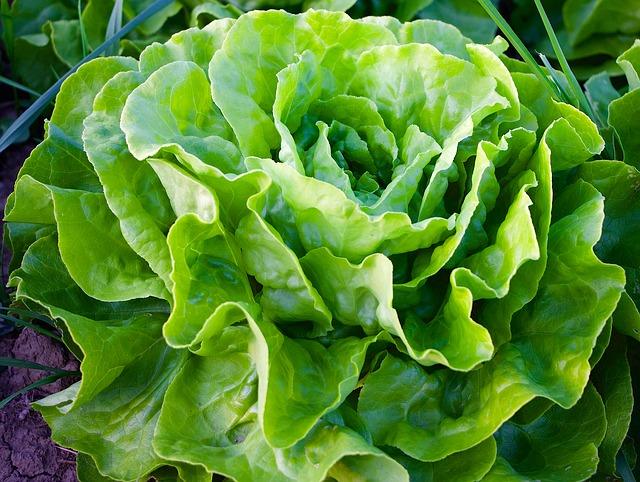Spring and summer bring a bounty of wonderful fresh vegetables to enjoy and for many, salad greens become a staple. But in the fall and winter, you might feel like you’re missing out if you can no longer enjoy fresh greens from your garden.
For the most part, salad greens such as lettuce, spinach, mustard, arugula and certain herbs are cool weather crops, best planted when temperatures are around 60 to 70 degrees Fahrenheit. When soil temperatures fall below 50 degrees or rise above 80 degrees, germination can be hit or miss. The good news is that with a little bit of planning, it is possible to enjoy fresh salad greens year-round.
Choosing Your Varieties
One of the great things about lettuce is how many varieties are available to today’s gardens. Different shapes, colors and textures – a green salad need never be boring! But if you’re wishing to have fresh greens year-round, you need to make your selections based on more than just appearance.
Plan on getting at least eight to 10 types of seeds. For outdoor gardening, get your start in early spring by planting varieties that do well in cool soil and less daylight. These include types such as Arctic King and Black Seeded Simpson. A variety of arugula called Astro also does well.
Need Non-GMO Salad Green Seeds? Get Them From A Company You Can Trust!
As the weather begins to warm, you’ll want to switch over to more heat-tolerant greens. Consider lettuce varieties such as Red Butterworth and Larissa or spinach varieties such as Tyee or Emu.
For greens that you intend to grow indoors, choose varieties that are suited to an indoor environment such as Tom Thumb lettuce, Catalina spinach and Mesclun mix.
Seed Starting – Indoors or Out
If you expect to have fresh salad greens throughout the year, then you’ve got to have a steady supply of healthy young transplants. This means you’re going to be planting one or two pinches of seeds each week.
Choose soil or potting mix that has a good amount of organic matter. If planting outside, first use a fork or trowel to mix in some compost with the top few inches of soil.
During ideal soil temperatures, greens are easy to grow by directly sowing outdoors. When it is either too hot or too cold to plant outside, you can plant indoors using grow lights.
Planting With Grow Lights
For cultivating salad greens indoors, it is best to have a set of two to four fluorescent bulbs with a combination of warm and cool white light bulbs. The newer T-5 bulbs are also a good energy saving option. Be sure to replace bulbs once they start to turn black at the tips.
Story continues below video
Greens tend to not too picky about the type of container that they are grown in, so you can use whatever is available, including pots, plastic trays and recycled containers from the grocery store as long as they have decent drainage.
Seeds should be sown between ½ to 1 inch apart and not very deep (some types of lettuce seeds actually need to be exposed to a bit of light in order to germinate). Once the seeds are sown, mist them with water. Cover containers with plastic wrap until the seeds have started to germinate.
Planting in Outdoor Microclimates
If you are not a fan of growing indoors but would rather extend your outdoor season, this can be done by creating outdoor microclimates in order to keep your soil close to the ideal temperature range of 60-70 degrees.
Using hoops and a row cover, you can create tents in your garden that will protect your greens and allow them to grow outside for much of the year. When the temperatures drop to around 25 degrees Fahrenheit during winter and late spring, it is best to use a garden quilt and as the temperature starts to warm, an all-purpose garden fabric will do the trick.
This New All-Natural Fertilizer Doubles Garden Production!
You also can use the same principle to keep your lettuce and spinach thriving in warmer temperatures. When the mercury reaches 80 degrees or higher, use the same hoops but with shade netting in order to lower the temperature of the soil.
Another option for outdoor winter growing is to make use of cold frames.
Harvesting
Most types of greens will regrow if they are harvested correctly. Use a clean pair of scissors or knife and cut the leaves, leaving about half an inch.
Having tasty and fresh salad greens every month of the year does not have to be “mission impossible.” With some planning, you can grow lettuce, spinach and other greens outdoors for most of the year, and indoors for the few months in which outdoor growing becomes too difficult. During the dead of winter, outdoor plants are likely to stop growing – or grow very slowly; however, if protected property, most of the hardy plants will overwinter and be ready to harvest again come March.
What advice would you add on growing lettuce year-round, including indoors? Share your tips in the section below:
Every Year, Gardeners Make This Stupid Mistake — But You Don’t Have To. Read More Here.
 Off The Grid News Better Ideas For Off The Grid Living
Off The Grid News Better Ideas For Off The Grid Living




